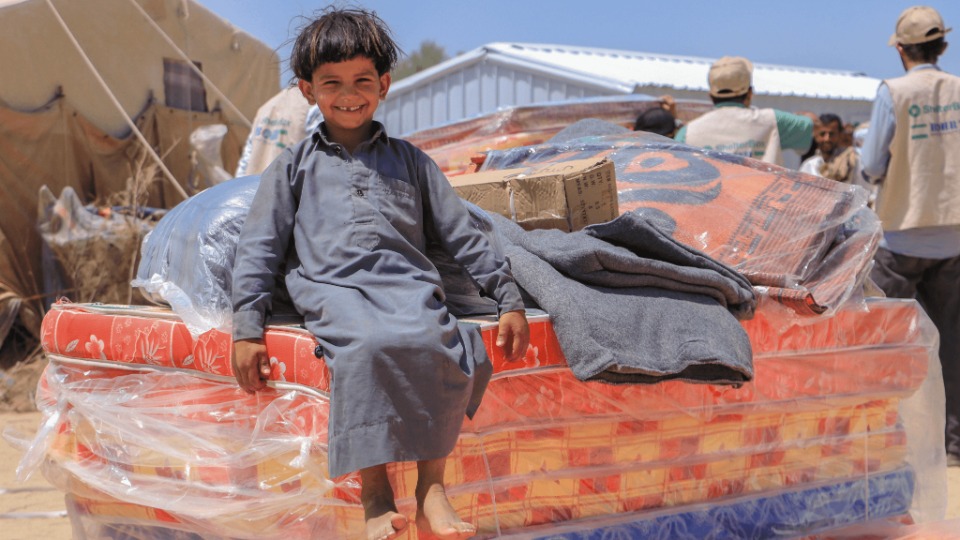From addiction recovery classes to courses to start your own business, The Church of Jesus Christ of Latter-day Saints is bringing hope and help to individuals, families and communities from Mulga Bore in Australia’s outback to downtown Manhattan—and in tens of thousands of places in between.
 DOWNLOAD
DOWNLOADIn addition to the many opportunities to improve one's temporal or physical situation, the Church's mainstays are social and spiritual—or, in other words, fellowship and worship. There are weekly chances to come together with others to worship God, pray, sing hymns, share spiritual messages, and otherwise encourage one another at the beginning of each new week. The focal point of this gathering is the opportunity to partake of the sacrament, a symbolic remembrance of the sacrifice of Jesus Christ and a chance to look ahead with fresh eyes and a lighter heart.
Central to many Latter-day Saints' experience is daily prayer and scripture study—in particular, The Holy Bible and The Book of Mormon: Another Testament of Jesus Christ. The teachings and stories of scripture provide comfort, direction, and hope for millions worldwide.
Another key element is the faith's focus on strengthening marriages and families. For Latter-day Saints, family bonds can be eternal, and sweet. Not without challenges, but worth the effort to work on. There are at least three sacred spaces for Latter-day Saints to recalibrate their faithful focus, and to work on these lofty goals: the home, the church meetinghouse, and the temple. Covenants, or sacred promises and commitments, bind Latter-day Saints to God, Jesus Christ, and their family in upward-looking and outward-serving ways.
The glue that brings a lot of these theological parts together is service to others. A Latter-day Saint scripture states that "when [you] are in the service of your fellow man, [you] are only in the service of your God." So, if you are a believing, engaged Latter-day Saint, you most likely have a lay responsibility (or a calling) in your congregation to help others—through leading the music, teaching children or youth, or ministering to someone who needs a little love and support.
For Latter-day Saints, that approach often spills over into neighbourhoods and communities. The most visible service may well be offered by the 70,000 or more missionaries, young and older, serving in countries around the world.
Last year, the Church supported humanitarian projects worldwide valued at over 2 billion AUD. 185 million AUD of that came from Australian Latter-day Saints whose donations to Latter-day Saint Charities Australia supported humanitarian projects around the world.
Australian Latter-day Saints supported food and nutrition projects in Bangladesh, Fiji, Indonesia, and another 40+ countries. They helped fund clean water, sanitation, and hygiene projects in Lebanon, Ghana, Papua New Guinea and another 15 or so countries. Projects funded through Latter-day Saint Charites Australia brought shelter support to people in Burundi, Chad, Ethiopia, Ukraine, and Yemen; and responses to emergencies or calamities in Belize, Libya, Turkiye, Vanuatu, among others.
Several Australian-funded projects responded to refugee and migration crises that provided shelter (tents and tarpaulins), WASH (water, sanitation, hygiene), winterization needs, and capacity-building.
In December 2023, the Church brought “Giving Machines” to shopping centres in four major cities across Australia. These machines, like vending machines, enable people to donate to local charities such as Blaze Aid and Children’s Hospital Foundation so these charities can help more people who need support. The Church of Jesus Christ pays for these machines so 100% of donations go to the Australian charities.
In addition, many Australian Latter-day Saints fast once per month, and make a financial offering which is used to help individuals and families in their congregations to buy groceries, pay the rent, or take care of other emergency needs.
The focus of members of the Church is to love God and your neighbour. Read more about the Church’s efforts to care for others here.
In addition to supporting efforts to alleviate poverty and strengthen communities, there is also an emphasis on helping individuals and families become more self-reliant.
BYU Pathway Worldwide, for example, offers online education opportunities to individuals around the world, many of whom may have felt they were too old, too uneducated, or too [fill in the blank] to get ahead in life.
For Latter-day Saints, principles of human dignity, mutual respect, and freedom of religion or belief are spiritual as well as practical matters. In many cities and towns, Latter-day Saints are members of multifaith and community organisations. These friendships and associations open doors for Church members and friends to accomplish more together.
Though Latter-day Saints don’t claim to be perfect—collectively or individually—there is a hopeful resilience and a reliance on second chances, third chances, and more, to get back up and try again. The Church's President and Prophet, Russell M. Nelson, calls this "the joy of daily repentance."
At the heart of a Latter-day Saint's religion is God as a loving Heavenly Father, with a plan for all His children, made possible by a beloved Son, Jesus Christ, whose Atonement, Resurrection, and daily grace, inspire, enable, and empower Church members to move forward with optimism and joy—one day, one choice, and one challenge at a time. President Nelson urges individuals to “Let God Prevail,” to “Hear Him,” meaning Jesus Christ, to “Be a Peacemaker,” and to “Think Celestial.” Short but powerful sermons that inspire millions.
If you were to spend a few hours with a believing, engaged Latter-day Saint (or a few Latter-day Saints), you would most likely see, hear, and feel that the ways this religion translates into daily life are deeply personal, fruitful, hopeful, and joyous.